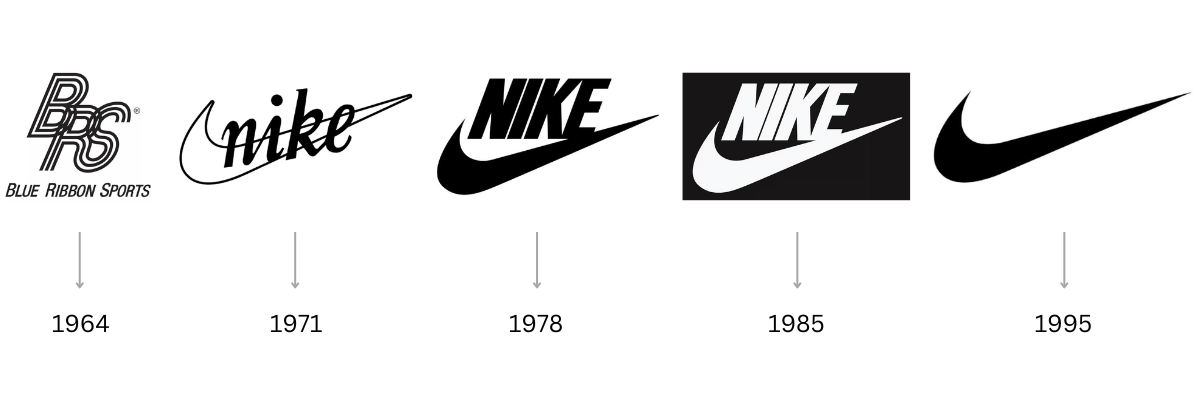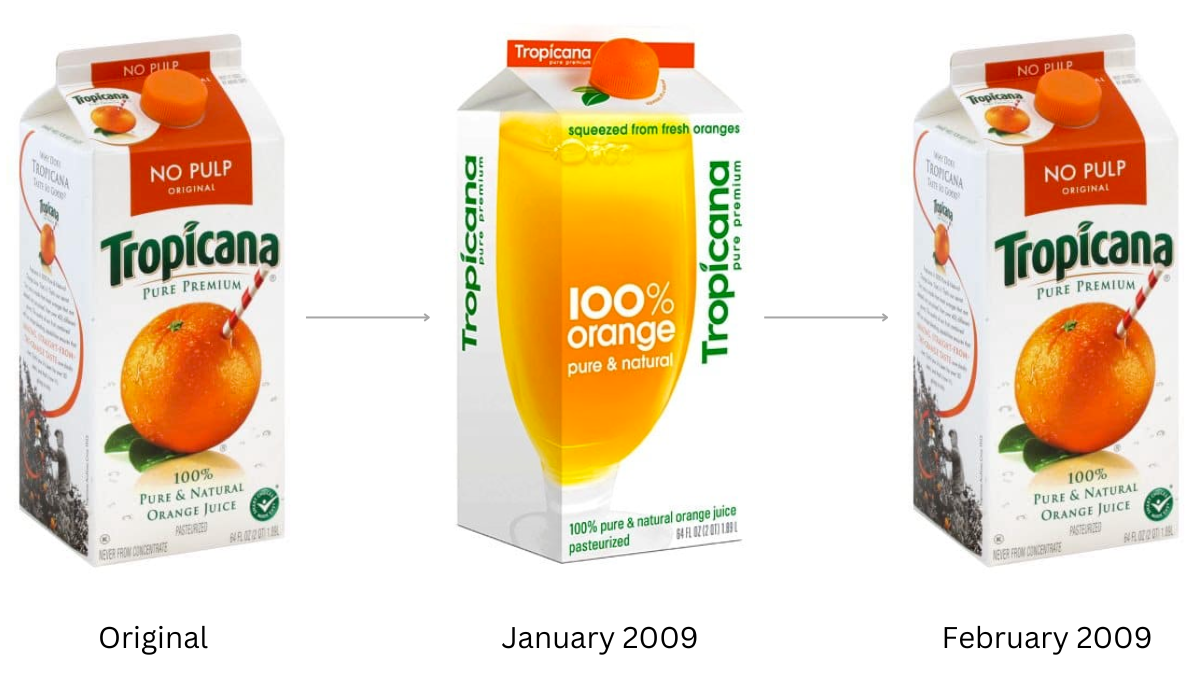Debranding is currently a hot topic amongst the branding and marketing world, and is a term that existed long before Pringles decided to remove the luscious locks from their famous mascot Mr. P (he has a name, who knew!?). But what does this mysterious term mean and why are brands deciding to swap their whimsical, colourful identities for a more streamlined, sleek look? Firstly, we need to understand what this term even means…
What is ‘debranding’?
To put it simply, this term references the act of brands simplifying their branding in a bid to appear less corporate. Most commonly, it includes brands simplifying their logos, colour palettes, typefaces and visual identities, removing all the fluff surrounding the brand and distilling all visuals to represent the core of their brand. Below are some of the most famous examples of brands ‘debranding’. You might see some you didn’t even realise has shifted…





The origin of debranding
Originally, debranding referred to brands stripping the manufacturer’s name or branding from their product. Brands began to realise that consumers were connecting more with visuals over their previously stale word marks and that this strategy was effective in giving the brand a much needed refresh.
One of the first brands to do this was Nike. Their logo originally consisted of both their iconic ‘swoosh’ and their brand name until 1995 where they made the bold decision to axe their brand name and make the ‘swoosh’ stand alone. A ballsy move, but one that seems to have paid off!

How is debranding relevant today?
In recent years, this marketing term has broadened its horizon to include all visual elements of a businesses identity, not just words. The aim stays the same, but the objective to become more personal is more important than ever!
As the digital world grows, so does the human need for connection. Consumers value trust over everything and by stripping back all the fluff, consumers are able to draw closer to brands and really see what’s really underneath. People want connection, not a transaction, and trust is the key to building long-lasting, fruitful consumer relationships. Brands have no option but to become consumer-focused and ‘debranding’ seems to be a step in the right direction for a lot of popular brands.
The advantages of debranding
1. Mobile optimisation
Before mobile phones, there was never much of a reason for brands to scale down their logos for much smaller than a business card or letter header. However, the rise of the digital era has increased the need for logo versatility. The majority of brand interactions now happen online and most of these, on a mobile phone. Having a brand identity that can adapt to a variety of online and offline environments is incredibly important for brand visibility and relevance.
2. To increase professionalism
Before the internet, many brands were forced to be simple due to the restraints given by the technology available at the time. Enter the internet and computers! With this, brands began to embody new personalities granted to them by the endless opportunities of the internet! This movement resulted in bright colours, whimsical mascots and playful typefaces. However, this look has become outdated and childlike. The ‘debranded’ trend has caused brands to modernise and polish their look in order to be deemed current and trustworthy by consumers.

Warner Brothers did exactly this in 2019 when they ditched their metallic shield and serif font and swapped it for a more minimalistic, 2D approach with a removable sans serif brand name. They even introduced a second version that brings back some of the 3D elements from the original but in a more refined, polished way. This logo is used primarily for on-screen content and occasionally for special cases.
3. It can visually represent a new brand direction
It’s a given that over time, brands will change. Their audience will shift, their values will shuffle and their brand position will switch. A great way to represent these changes is through a brand refresh. By adjusting small things like changing the serif of the typeface or refining the colour palette, a brand is able to communicate that they are moving in a new direction. This way, they are able to appeal to new audiences or even polish up their approach to reaching their existing ones!




Walkers are the country’s leading crisps brand and over the years, they have gone through many a debrand. Quite famously in 2013, they decided to take on a new branding approach and place more emphasis on their ‘home-grown British ingredients’. This simple design shift has changed their branding position towards a more patriotic message and now reflects one of their core values which is injected into every packaging refresh!
The drawbacks of debranding
1. It can cause confusion
Establishing your brand and becoming recognisable to consumers is hard. There’s no getting around that. It takes time, resilience, trial and error and a whole lot of hard work, which is why it’s super disappointing when brands lose that hard work over a simple design change. If you change your brand too much, you run the risk of becoming unrecognisable. Consumers no longer make that association with your brand and you will end up losing a lot of loyal customers. That’s why it’s important that the decisions you make are intentional and align with your current brand.
2. It can remove the brand’s personality
Although streamlining and modernising brands is important, you want to be careful not to erase any personality that lies within your branding. It is still very much important to stay true to your roots and have a unique tone of voice. Don’t be a sheep! Differentiating yourself from your competitors and other major brands out there is what will make you stand out and could be the defining factor of a consumer choosing between you and another brand. Make sure that, if it is still relevant to your brand, you are keeping the playful elements that make you, you.

In 2009, the world went up in arms against Tropicana’s new branding and packaging release. Although the packaging leans more towards a re-brand, the logo is definitely an example of a debrand fail! Within 2 months, sales dropped by 20%. People no longer recognised the brand therefore, they weren’t reaching for it. The ‘refresh’ also received a ton of backlash, so much so that they ended up reverting back to their original design in under a month! There is definitely a lesson to be learned from this…
3. It might not stand the test of time
‘Debranding’ is a trend and we don’t know when the wind will change and if brands will take a completely new direction in the next few years. That’s why it’s important to thoroughly ananlyse the brand’s current position and weigh up whether this will push it forward or pull it back. Trends come and go and it won’t always be beneficial to hop on every one that comes along. Make sure to evaluate the long-term strategy before making a big decision like this.

Gap is another fine example of a debrand gone wrong. In 2010, they took the plunge and shuffled around their logo elements to encourage a rise in sales. Unfortunately (but perhaps not surprisingly) this backfired… massively! Gap’s vice president of corporate communications claimed that it was a “more contemporary, modern expression” of the brand, but many were confused by the sudden change and felt a disconnect between the brand and it’s new look. Within 6 days, Gap did a U-turn back to their original 1990 logo and all was right with the world.
So, is debranding right for you?
‘Debranding’ is in no way a small decision. The adjustments might be small, but the effect might not be. Is it another design fad? Only time will tell. In the meantime, we are enjoying playing spot the difference in stores (you should try it, it’s very entertaining!)
If you would like to have a chat with us about exploring the idea of ‘debranding’ your brand, get in touch with our friendly design professionals! We would love to hear from you and brainstorm whether this could be the next step in growing your success as a business!



